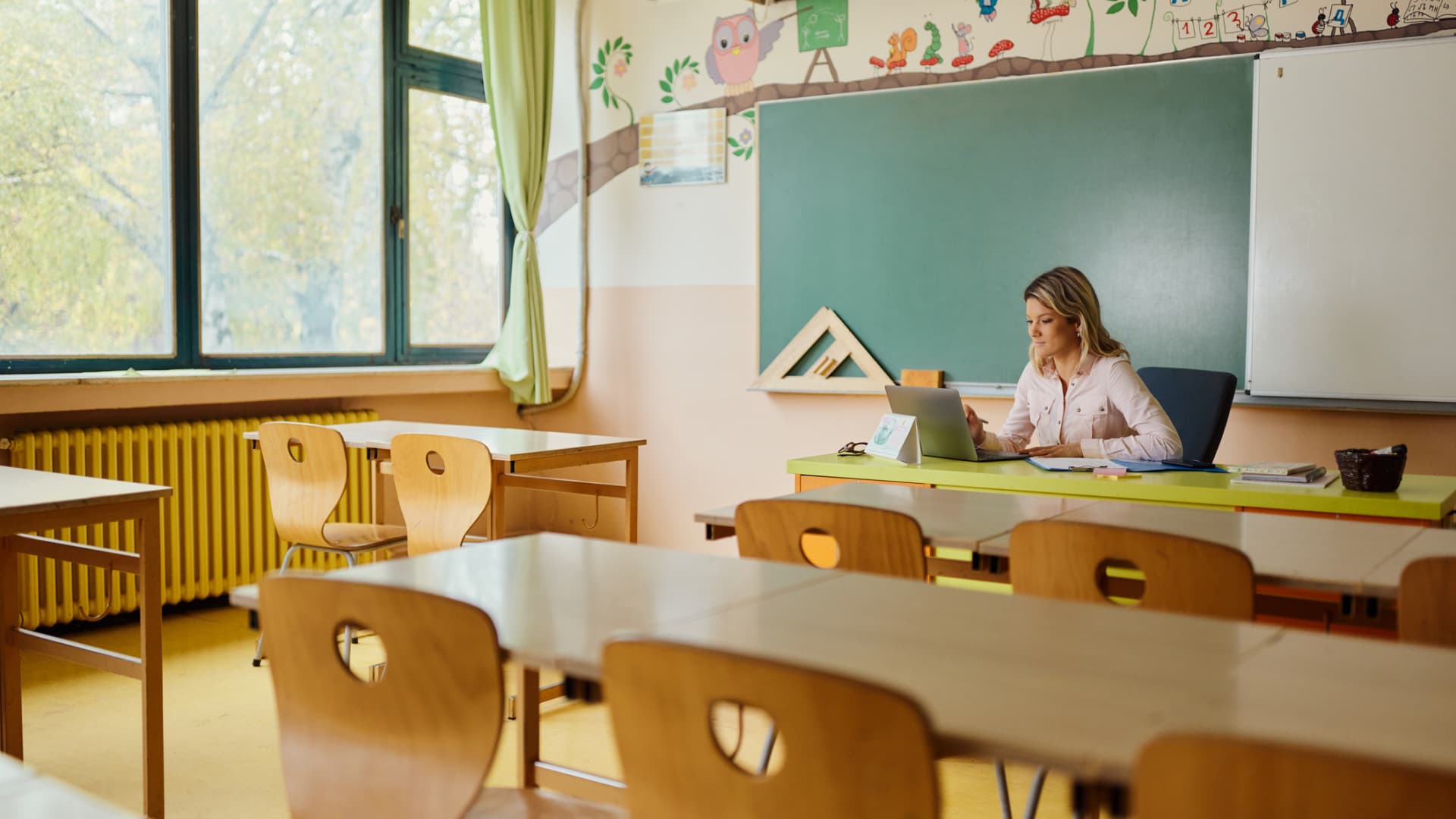Products You May Like
In October 2021, the Biden administration announced a one-year opportunity for student loan borrowers pursuing the Public Service Loan Forgiveness to get closer to being debt-free.
Signed into law by then-President George W. Bush in 2007, the Public Service Loan Forgiveness program allows certain nonprofit and government employees to have their federal student loans canceled after 10 years, or 120 payments. However, the program has been plagued by problems, making people who actually get the relief a rarity.
Thanks to the policy fix known as the Limited PSLF waiver, close to 360,000 borrowers have now qualified for $24 billion in loan forgiveness, according to U.S. Department of Education data analyzed by higher-education expert Mark Kantrowitz.
More from Personal Finance:
Biden’s student loan forgiveness plan is on hold
Inflation-adjusted college costs decline
These colleges promise no student debt
The average borrower got more than $67,000 in student debt cleared.
“These borrowers previously faced obstacles based on frustrating technicalities despite having worked in a qualifying public service job,” Kantrowitz said.
The reforms under the Biden administration included reassessing borrowers’ timelines and counting some payments that were previously ineligible because of a borrower’s loan type or repayment plan.
Although the opportunity ended this October, borrowers still have options if they didn’t benefit from the one-year fix.
Some borrowers may get a payment count adjustment
The Education Department has said that some borrowers in the public service sector will be eligible for a one-time adjustment of their payment count, even if they missed out on the Limited PSLF waiver. The adjustment will occur next July.
This could result in borrowers getting credit for certain payments that were previously disqualified toward their needed 120 payments, including partial and late payments, and those not counted because of a borrowers’ loan type or repayment plan.
Months during which a borrower was enrolled in a deferment of their payments or a forbearance may also count toward their timeline.
To qualify for the one-time relief, though, you need to have Direct loans. If you have either a Federal Family Education Loan (FFEL) or a Federal Perkins Loan, you should consolidate those into Direct loans with your servicer by May 1, 2023.
There are also some permanent changes coming to the Public Service Loan Forgiveness program, starting next July 1, which also include allowing borrowers to get credit for late payments or months in certain types of deferments.
How to tell if you qualify for PSLF
There are typically three primary requirements for public service loan forgiveness, although the recent changes provide some more wiggle room in certain cases:
- Your employer must be a government organization at any level, a 501(c)(3) not-for-profit organization or some other type of not-for-profit organization that provides public service.
- Your loans must be federal Direct loans
- To reach forgiveness, you need to have made 120 qualifying, on-time payments in an income-driven repayment plan or the standard repayment plan. (There are some 14 plan options to repay your student loans, but to qualify for public service loan forgiveness, you need to be enrolled in one of these four income-based repayment plans: income-contingent repayment, income-based repayment, pay-as-you-earn repayment or revised pay-as-you-earn repayment.
The best way to find out if your job qualifies as public service is to fill out the so-called employer certification form.
Many people think they need to fill out this form; in reality, it’s optional, Kantrowitz said. (In theory, you could wait until you’ve made the 120 payments, then apply, “but, it may be easier if you’ve been filing the employer certification forms all along, especially if one of your previous employers no longer exists,” he said.)
Try to fill out this form at least once a year, he added, and keep records of your confirmed qualifying payments.
Borrowers pursuing PSLF should also know that their servicer has recently changed from FedLoan to MOHELA.
In addition, all months during the pandemic-era payment pause that’s been in effect since March 2020 count toward your 120 needed payments, whether or not you’ve been making payments on your loans.
Student loan bills are scheduled to resume some 60 days after the litigation involving the Biden administration’s broad student loan forgiveness plan resolves. If the lawsuits are still pending by the end of June, the payments will pick back up 60 days after that, at the end of August.
